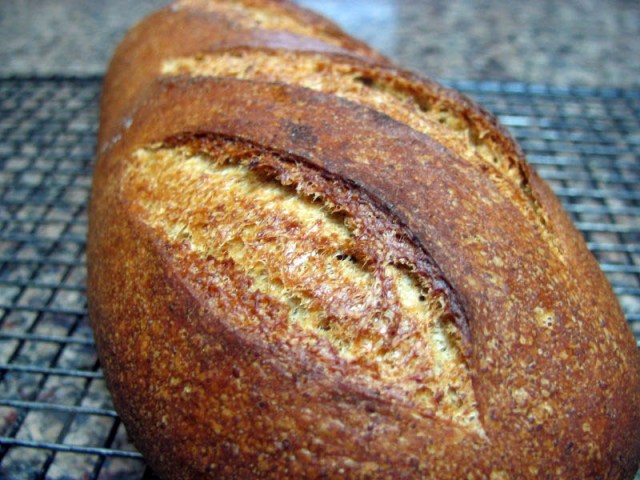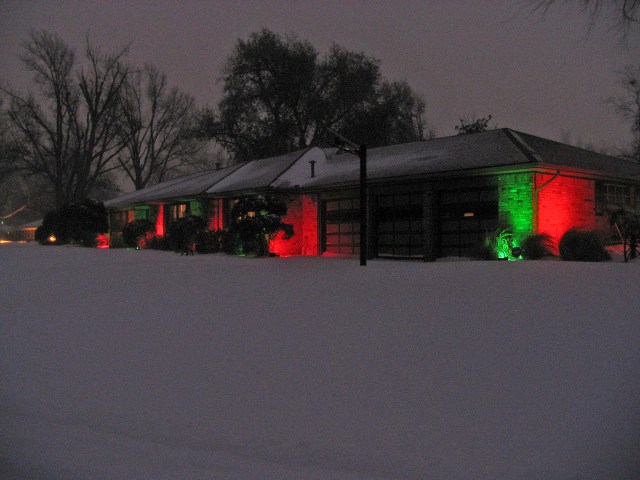Most couples have a song, we have a dish, … Beef Wellington. It was the first special meal that we cooked together, and it’s the recipe that we remember when a festive mood strikes. For something that’s surprisingly simple to put together (if you use commercial puff pastry), Beef Wellington is an elegant gastronomic statement. The rich combination of mushroom duxelles and foie gras raises the most delicate cut of beef to culinary heaven. Here’s a crucial piece of advice: use a meat thermometer to determine the cooking time, because overcooking will ruin this dish.
This year we chose Beef Wellington for our family’s Christmas Eve dinner, served as Evelyn George used to do it in my husband’s favorite restaurant, “The Carriage House” of South Bend, Indiana: with duchess potatoes and a wine reduction sauce. Fresh asparagus completed the meal.

BEEF WELLINGTON
(adapted from many different sources)
4 beef tenderloin filets, 1.5 inch-thick
1 T olive oil
salt and pepper
for the mushroom duxelles
4 ounces mushrooms
1 shallot, finely diced
1/2 T olive oil
1 T butter
salt and pepper
dash of nutmeg
1 T Madeira wine (or Sherry)
puff pastry (home-made or good quality store-bought)
slices of foie gras
egg wash (1 egg beaten slightly with 1 tsp water)
Heat oil on a large skillet until it starts to smoke, season the meat with salt and pepper, and sear the filets on both sides over high heat; 2 minutes per side. Reserve.
Prepare the duxelles: finely dice the mushrooms (preferably by hand) and squeeze 1/4 cup portions at a time in a fine cloth (twist the cloth to tighten the squeeze) to release their bitter juices. Heat the olive oil and butter in a large skillet, add the shallots and cook for a couple of minutes. Add the squeezed mushrooms, saute until fully cooked and most of the liquid has evaporated, about 8 minutes. Season lightly with salt and pepper, add the nutmeg, Madeira wine, and cook for a couple of minutes. Reserve.
Assemble the Wellingtons: roll out the puff pastry to enclose each individual piece of meat. On the center of the pastry, add a slice of foie gras, 2 tablespoons of duxelles, and set the seared filet mignon on top. Enclose it in the pastry, with the seam facing up, then invert the whole package, so that the duxelle layer is on top. Brush the surface of the wellingtons with egg wash, placing small cutouts of pastry as a decoration, if you wish. (Wellingtons can be assembled 6 hours in advance, keep refrigerated).
Cut some slits through the pastry, and place the packages in a 400F oven until the internal temperature of the meat reaches 125-130F for medium-rare – about twenty minutes (it will continue cooking a little more while it rests). Remove from the oven and allow it to sit for 10 minutes before serving.
(to print the recipe, click here)
receita em portugues na pagina seguinte
RED WINE REDUCTION SAUCE
1/2 shallot, finely diced
1/2 cup red wine
1/2 cup veal stock
salt and pepper to taste
2 T butter, cold, in small pieces
Remove most of the fat in the pan that you used to sear the filets, leaving about 1/2 tablespoon. Sautee the shallots for a couple of minutes, then add the red wine and deglaze the pan well. Add the veal stock and boil gently until the sauce is reduced by half and slightly thickens. Season with salt and pepper. Add the butter in pieces, a few at a time, swirling the pan over low heat. The sauce will get a smooth shine from the emulsion with butter. Remove from heat and serve alongside the Beef Wellingtons. If necessary to re-heat, do it over very low flame.
(to print the recipe, click here)
ENJOY!
for comments and more photos, jump to next page

















